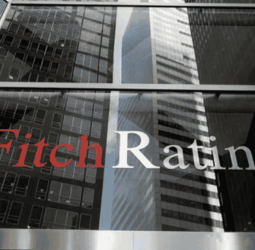- The IPS warns that cyclical recovery will slow next year, even upon hitting pre-crisis output levels
As Sri Lanka’s cyclical recovery is expected to ease from next year onwards, returning to pre-crisis stability would require a growth push that is external to fiscal and monetary policy measures - which have been exhausted, Institute of Policy Studies of Sri Lanka (IPS) Executive Director and Macroeconomic Policy Head Dushni Weerakoon said.
“The momentum of a cyclical recovery will start to ease, or slow down, unless we provide some productivity, efficiency gains coming through a reform effort,” Weerakoon said, warning of an expected downturn in growth, during the presentation of the yearly State of the Economy report.
Weerakoon noted that though Sri Lanka is on the path to reach pre-crisis levels of stability next year, the contractions in growth which have persisted in the past four years are a call to caution on sentiment.
“Even though we will reach pre-crisis output levels next year, it doesn’t mean that we have recovered all the lost output as a result of the crisis.”
“During 2022, 2023, 2024, the contraction was such that we may never recover that output, but growth has to accelerate if we are to catch up on what we have lost.”
Weerakoon added that Sri Lanka, with its exhausted monetary and fiscal policy measures, has no room for relying on such tools to boost growth, in the event that growth may stagnate next year.
“Having said that, it is important to keep in mind that growth should not be pushed more than it is warranted by leaning on fiscal and monetary policies, as there is no bandwidth on fiscal policy, bringing down government debt and borrowing does not automatically equate to sustainable public finances.”
Weerakoon also pointed to Sri Lanka’s public investment-to-GDP ratio as an important indicator of economic health.
The highest ratio was recorded at 46% in 2017, but by September 2023, it had dropped to just 18.2%. By September 2024, it was at 22.9%.
“We can still see that public-investment-to-GDP is on a downward trend, that’s a red line, and we need to reverse that if public investment is to provide some degree of support to accelerate growth.”
She further emphasised that the exhaustion of monetary policy had led to a situation where 65% of interest payments were being diverted from revenue collection.
“Some other indicators, such as the share of interest payments soaking up revenue collection, have reached an elevated 65%, compared to 40% pre-crisis,” she noted.
“Some other indicators like the share of interest payments soaking up revenue collection, is at an elevated 65%, compared to a 40%, pre-crisis.”
“On the fiscal policy side there is a long way to go before we can say that we are within reach of a sustainable public finance position.”
She explained that IPS, as an institution which provides insights for the government’s policy-making measures, found that it was key to hone in on the opportunity of driving a boom through digitalisation - one that may be sustained through its structurally driven growth process.
“When we considered all of these practices and looked at government policy priorities, we decided that the focus on digitalisation can be the answer to ensure a smooth transition from Sri Lanka’s current cyclical recovery, to one that is a structurally driven growth process.”
“Digitalisation brings efficiency and productivity gains through four main channels: Increased average productivity, better matching of demand and supply, process efficiency improvements, and enhanced government efficiency,” she said.
“It can also lift employment and wages, as use of ICT technologies are absorbed in the labour force, access to market improves, especially for rural households and small firms, and this is also one way in which disparities that exist in the sphere can be addressed and importantly it helps governments to get their public finances in order, with efficiency in government spending and revenue mobilisation.”
The source: The morning
You Must be Registered Or Logged in To Comment Log In?



 Natasha
Natasha




